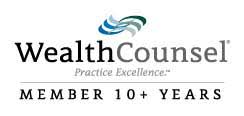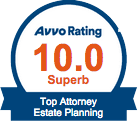As the recent recession ended and a new real estate growth period started, many real estate purchases in recent years were investor or second-home buyer purchases — an indicator of the growing popularity of real estate investing as a wealth-building strategy.
Understanding the basic principles of asset protection — tools and techniques used to legally protect property from potential creditors and lawsuits — is vital for real estate investors to ensure that the fortune they are working to build remains safe.
Why people sue
According to a leading research organization, Towers-Watson, the U.S. tort system cost $264.6 billion in 2010 — a 5.1 percent increase over 2009. These costs are anticipated to increase.
There are several factors that contribute to this, including: our litigious society; a tort system that rewards those who fail to take responsibility for their own actions; “Robin Hood” juries that dole out large judgments in sympathy for the plaintiff; plaintiffs’ attorneys’ contingency fee systems; and the high cost of defending lawsuits spurring defendants to settle even meritless claims.
Whether legitimate or frivolous, the most common claim a real estate investor would be subject to is “premises liability” — liability simply because the investor owns the property. If anyone is injured while on the property (electrocuted, slip-and-fall, dog bite, and so on), it is safe to assume that that person will sue the property owner.
What’s at risk
Asset protection looks at several risk factors:
Inside liability arises directly from the asset. Any real estate is subject to risk because someone might have an accident at the property that results in a lawsuit.
Outside liability is the risk that an asset might be subject to from unrelated claims. For example, if you cause a car accident and someone obtains a large judgment against you, your real estate holdings could be foreclosed upon to satisfy the judgment.
Risky and safe asset
Assets are divided into two classes, “risky” and “safe.” Safe assets do not, by their nature, subject asset holders to liability risk. For example, you would not expect to be sued for owning shares of a mutual fund.
Rental real estate is regarded as a risky asset because it can expose owners to liability due to its physical character. Risky assets are subject to both inside and outside liability; safe assets are typically exposed only to outside liability.
Four basic principles
A well thought-out asset protection plan will include these basic principles:
- Separating the investor from the assets and activities that create liability
- Separating the assets and activities from each other
- Providing a means to protect the assets from unrelated claims
- Achieving asset protection in a way that is either tax neutral or tax favorable.
- For real estate investors, there are several business entities that can be established that fit very nicely within the above principles. One such entity is the limited liability company.
A limited liability company (LLC) resembles a corporation. Ownership of the company is established through representative units and LLC owners are called “members.” Members, like limited partners, are generally protected from the company’s liabilities.
The LLC provides protection by acting as an independent, encapsulated, entity for its assets. For example, if you own two assets, a commercial building and a personal bank account, that bank account would be at risk if someone sued you for an accident at the commercial building. If you had created an LLC and transferred the commercial building into it, however, the bank account would be insulated from the commercial building’s outside liability.
The steps required for comprehensive asset protection are often complex, and the assistance of a qualified professional well versed in real estate, business, tax and trust and entity formation laws is vital.
By consulting an expert in asset protection, real estate investors can create an asset protection plan that best suits their needs and best protects their financial interests.




